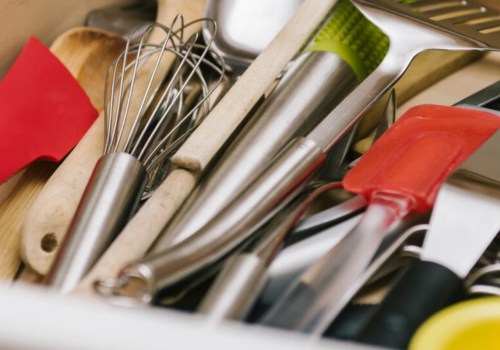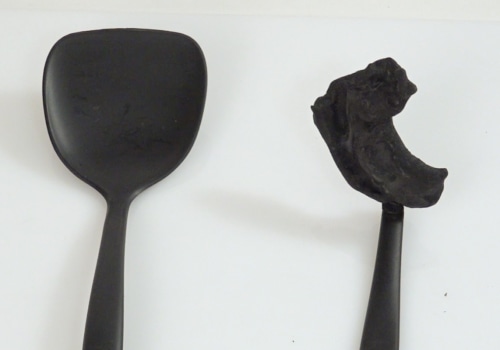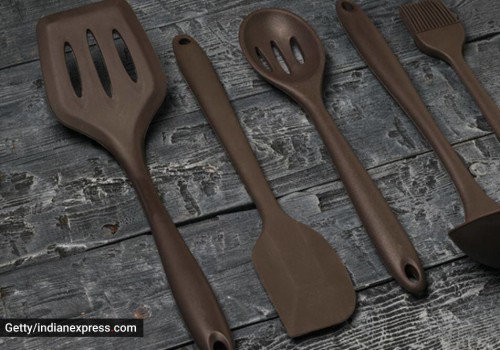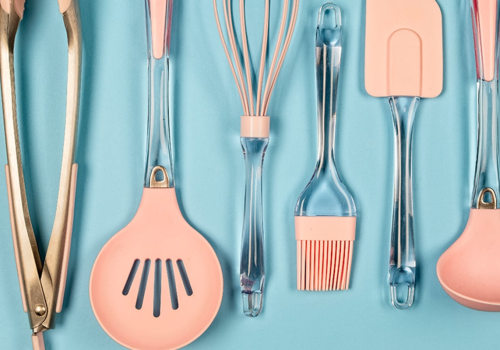Food-grade silicone is a safe and reliable material for baking and cooking. It is an inert material, meaning that none of the components used to make it will leach into the food cooked in it. Silicone is also non-stick, so there is no need to grease pans when baking bread or muffins, and food can be released with a gentle twist or push. Most silicone products can withstand temperatures up to 260 degrees Celsius (500 Fahrenheit).
Manufacturers usually stamp the maximum oven temperature for each item on the product itself. With all the negative press on Teflon and other metals leaching out of pots and pans, consumers are looking for kitchen utensils that are easy to clean and don't pose health risks. Silicone, a synthetic rubber made of bonded silicon (a natural element found in sand and rock) and oxygen, is increasingly filling this niche. The flexible yet sturdy material can go from freezer to oven (up to 428 degrees Fahrenheit), is non-stick and stain resistant, and comes in a range of bright colors. But some people wonder if there are any drawbacks to using silicone cookware. Internet publications have reported dyes or silicone oil oozing from overheated silicone cookware, as well as reports of lingering odors after repeated washing.
In addition, silicone's reputation has been tarnished by problems associated with silicone gel breast implants. Some women with previous generations of these implants experienced capsular contracture, an abnormal immune system response to foreign materials. And while theories about the relationship between silicone implants and breast cancer have been debunked, the damage to silicone's reputation remains. Unfortunately, since the use of silicone in cookware is relatively new, there hasn't been much research into its safety for use with food. The Food and Drug Administration (FDA) determined that silicon dioxides, the building blocks of silicone cookware, were generally recognized as safe for use even in food-grade contexts.
But the first silicone kitchen utensils (silicone spatulas) didn't begin to appear on store shelves until a decade later, and the FDA has not conducted any follow-up studies to determine if silicone can leak from cookware and potentially contaminate food.Health Canada argues that food-grade silicone does not react with food or beverages or produce any hazardous smoke and is safe to use up to recommended temperatures. Consumer Advocate Debra Lynn Dadd investigated potential toxicity and concluded that silicone “is not toxic to aquatic or soil organisms, it is not a hazardous waste and, although it is not biodegradable, it can be recycled after a lifetime of use”.So while most people probably don't have a problem with silicone cookware, those with chemical sensitivity will want to stay away until more definitive research has been done. Meanwhile, cast iron and anodized aluminum cookware remain the best options for those who worry about harmful elements leaking into their cooked food. It is an inert material: nothing used in its manufacture will leak into food. So far, no safety issues have been reported, but if you're worried, use silicone cookware (such as spatulas) and avoid bakeware.
Silicone cookware has features that offer some advantages over their metal, plastic, rubber or wood counterparts. Food-safe certified silicone cookware won't leak any harmful chemicals into your food so you can cook with peace of mind. There is some debate about leaching chemicals that coat food-grade silicone cookware but there is no concrete evidence to support this claim. Healthy eating depends on many factors and kitchen utensils are one of the most important considerations. In general, it's important to know what you're getting into before using silicone bakeware like any other type of baking sheet. To ensure the longevity of your silicone cookware, it's important to dry them properly after each use.
Although they are often marketed as non-stick products, they don't always live up to that claim. Most tests on silicone bakeware show that pans need grease and release food with difficulty even when following the manufacturer's instructions to the letter. Some studies have shown that silicone can release toxins when heated and there have been cases of people being poisoned with silicone kitchen utensils. The FDA has a position on silicone cookware in the sense that silicon dioxides are generally recognized as safe. The advantages of silicone include heat resistance, flexibility, the fact that it can go straight from oven or microwave to refrigerator or freezer and that it is generally easy to clean. However, with a little elbow grease, baking soda and anti-grease dish soap you can make your silicone utensils look new in no time.
Now you can get cake molds, cupcake molds, strainers, pot holders, baking mats, ice cube trays, baking brushes, spoons cake molds and even baking molds made of silicone. This will ensure that no harmful chemicals are released into food and will make kitchen utensils easier to clean.



